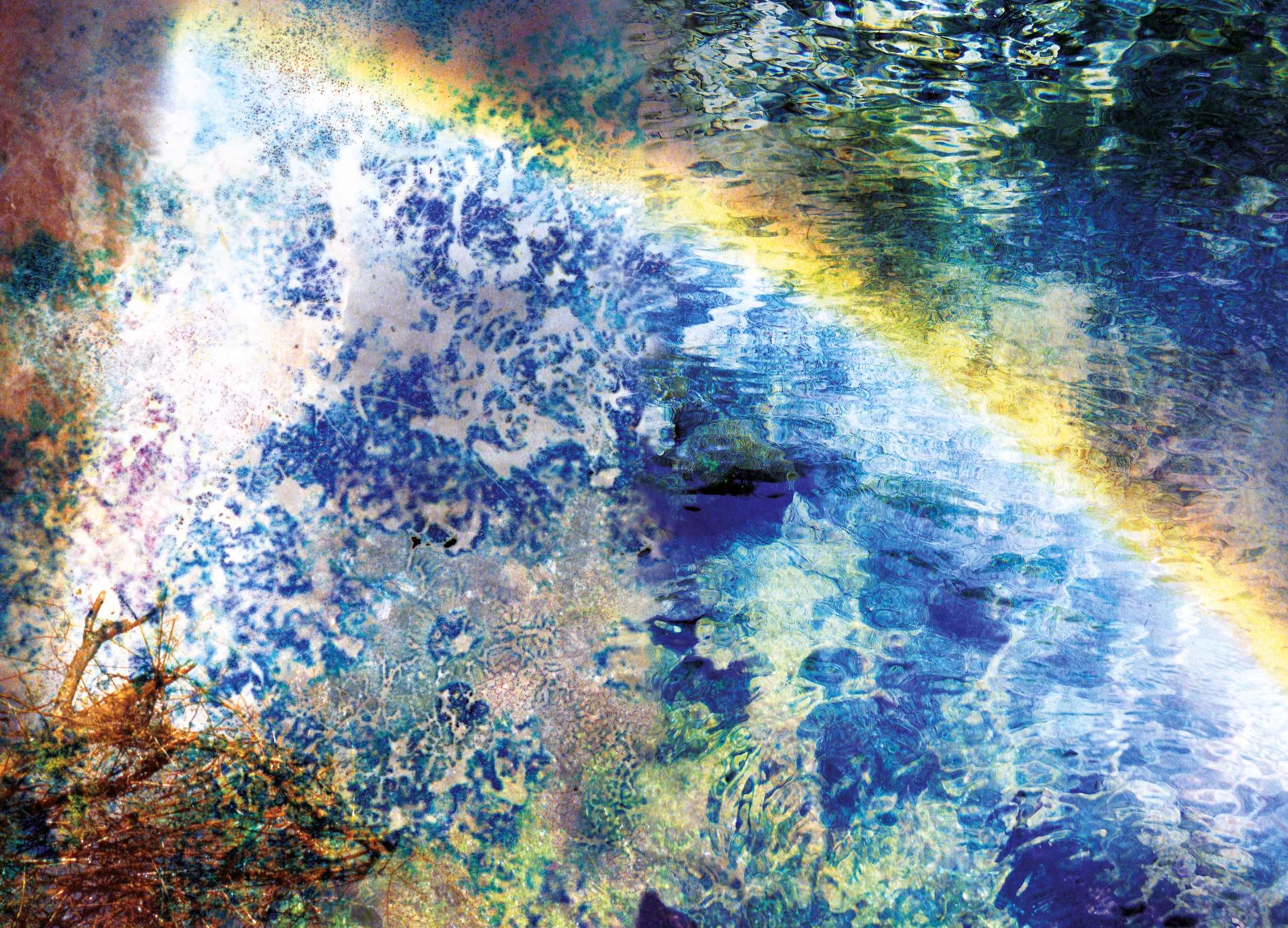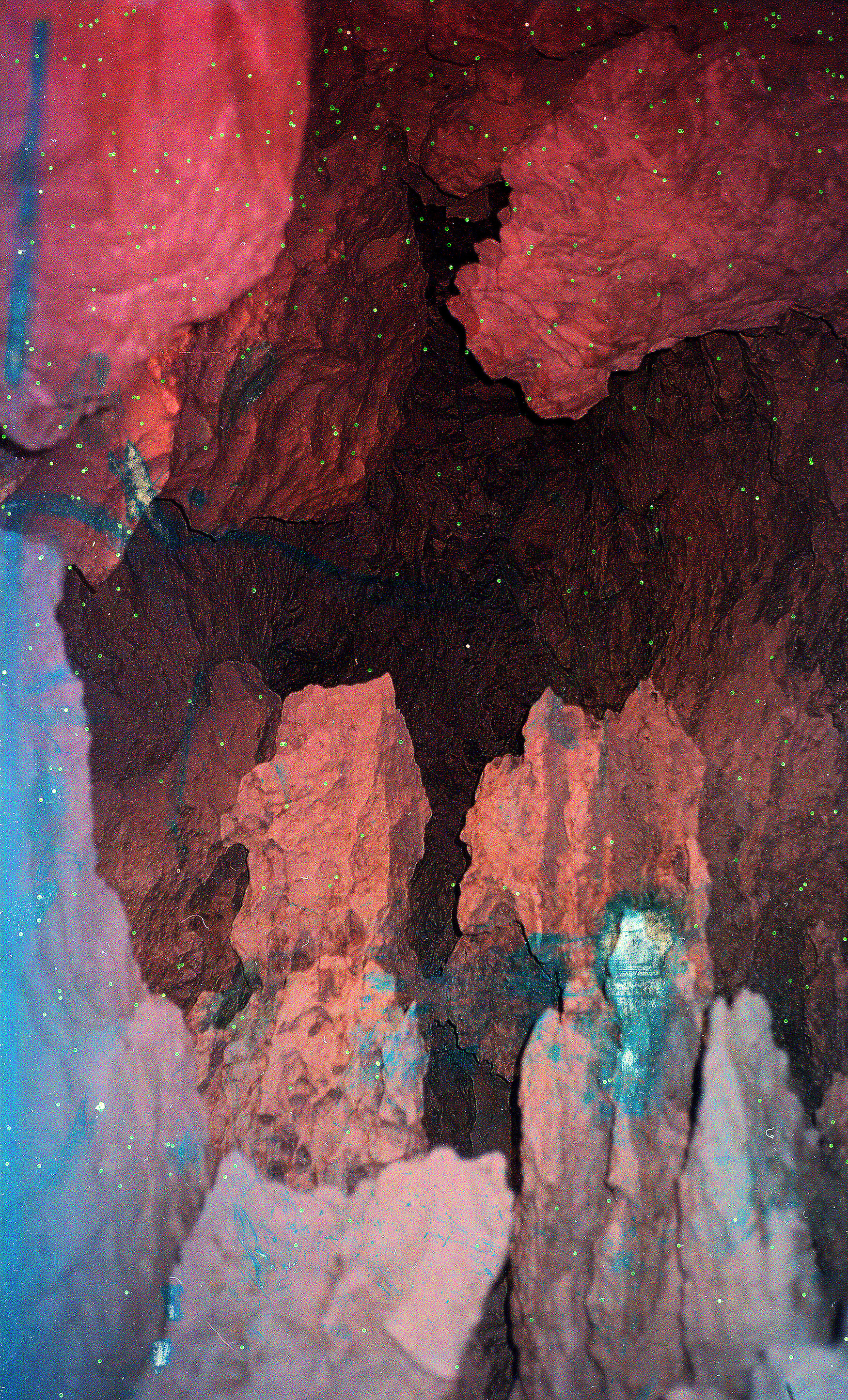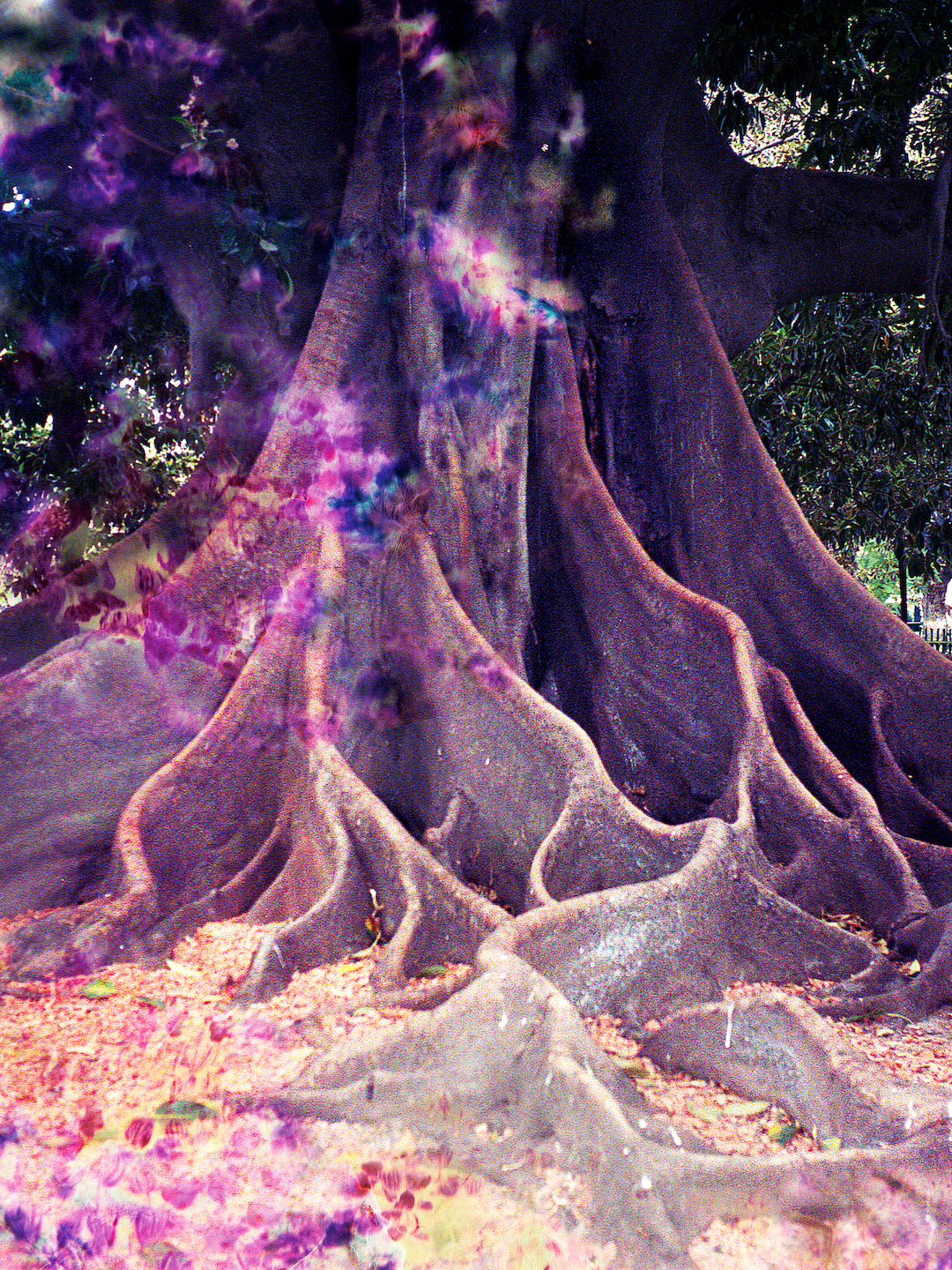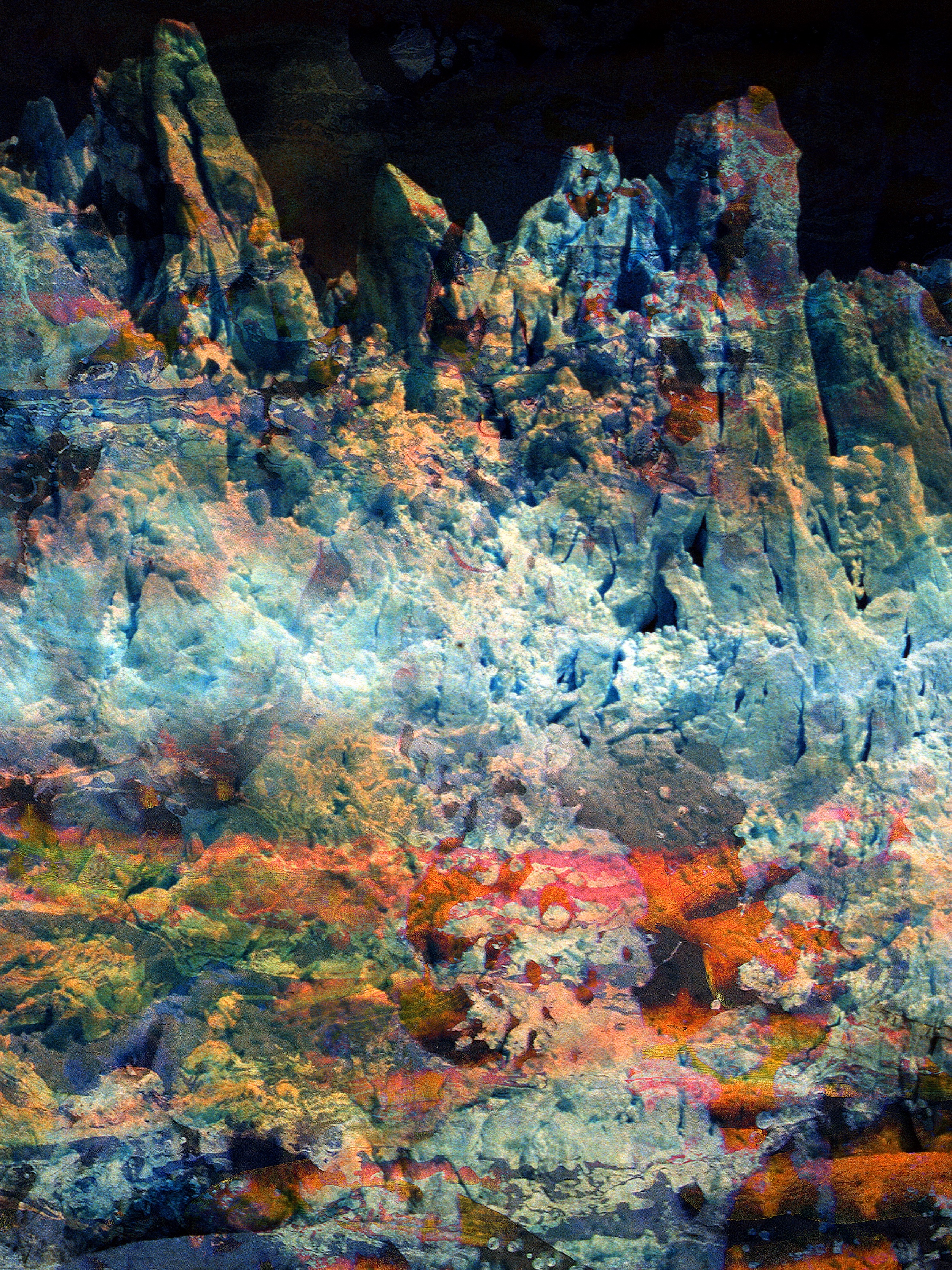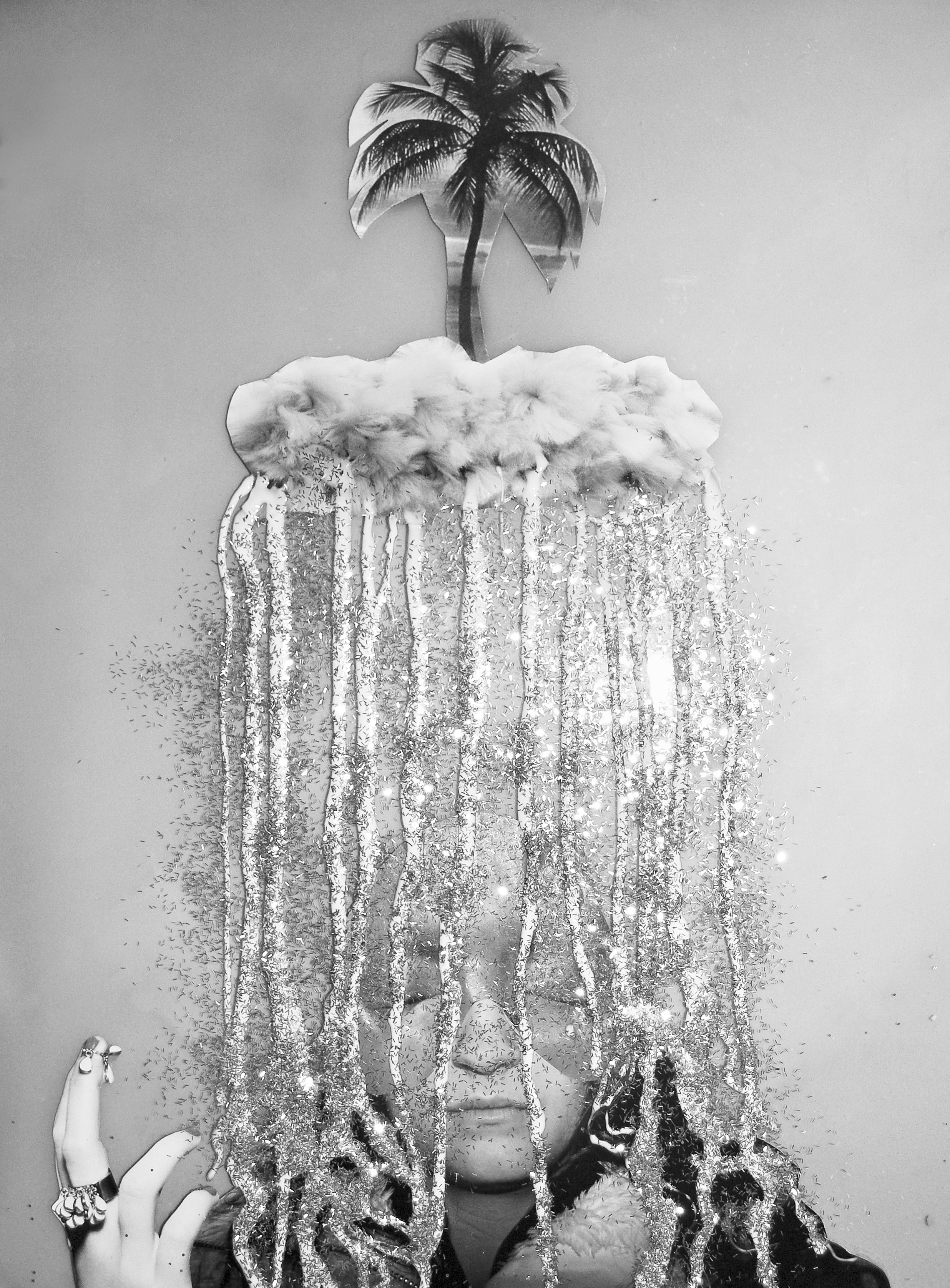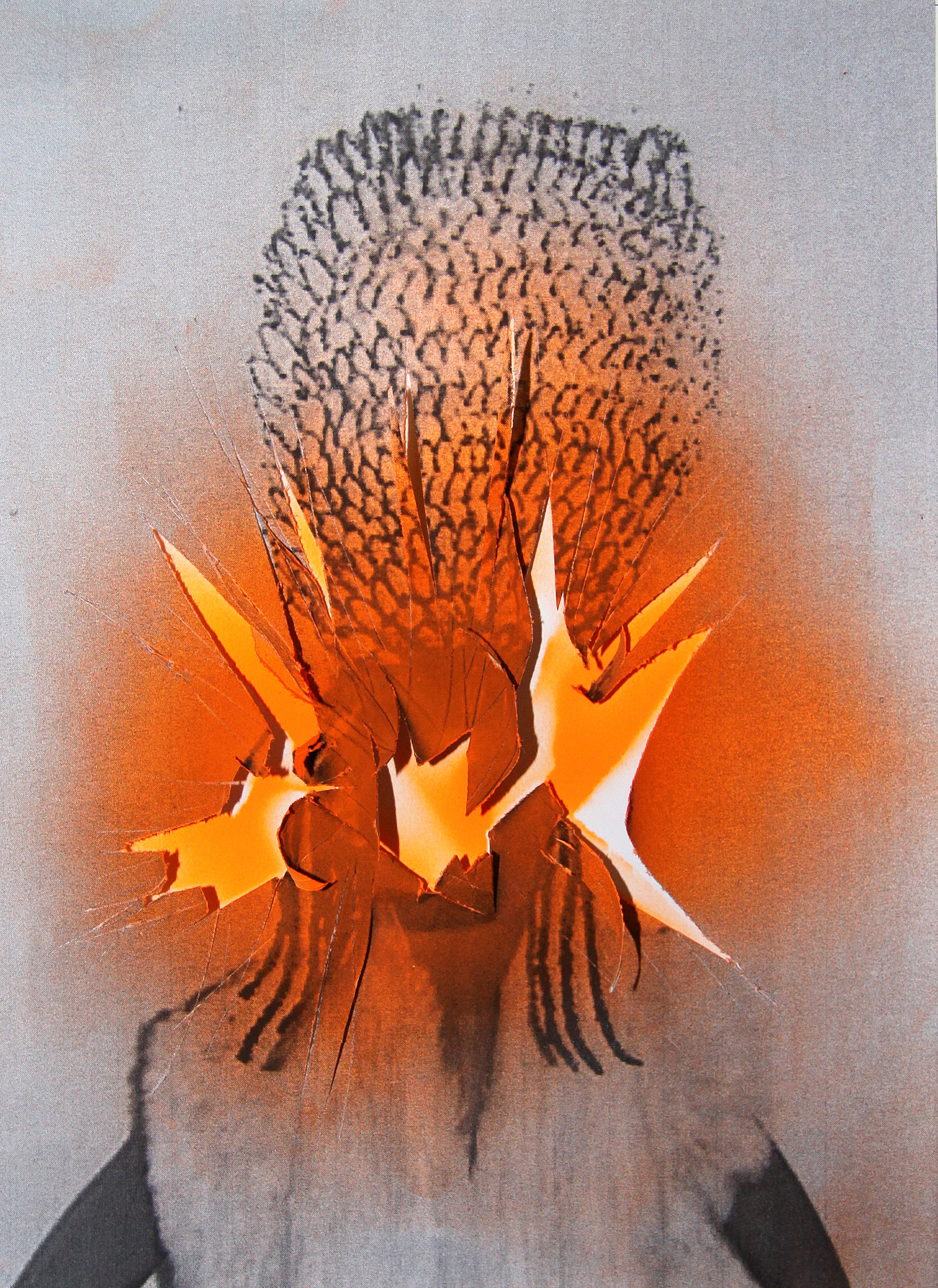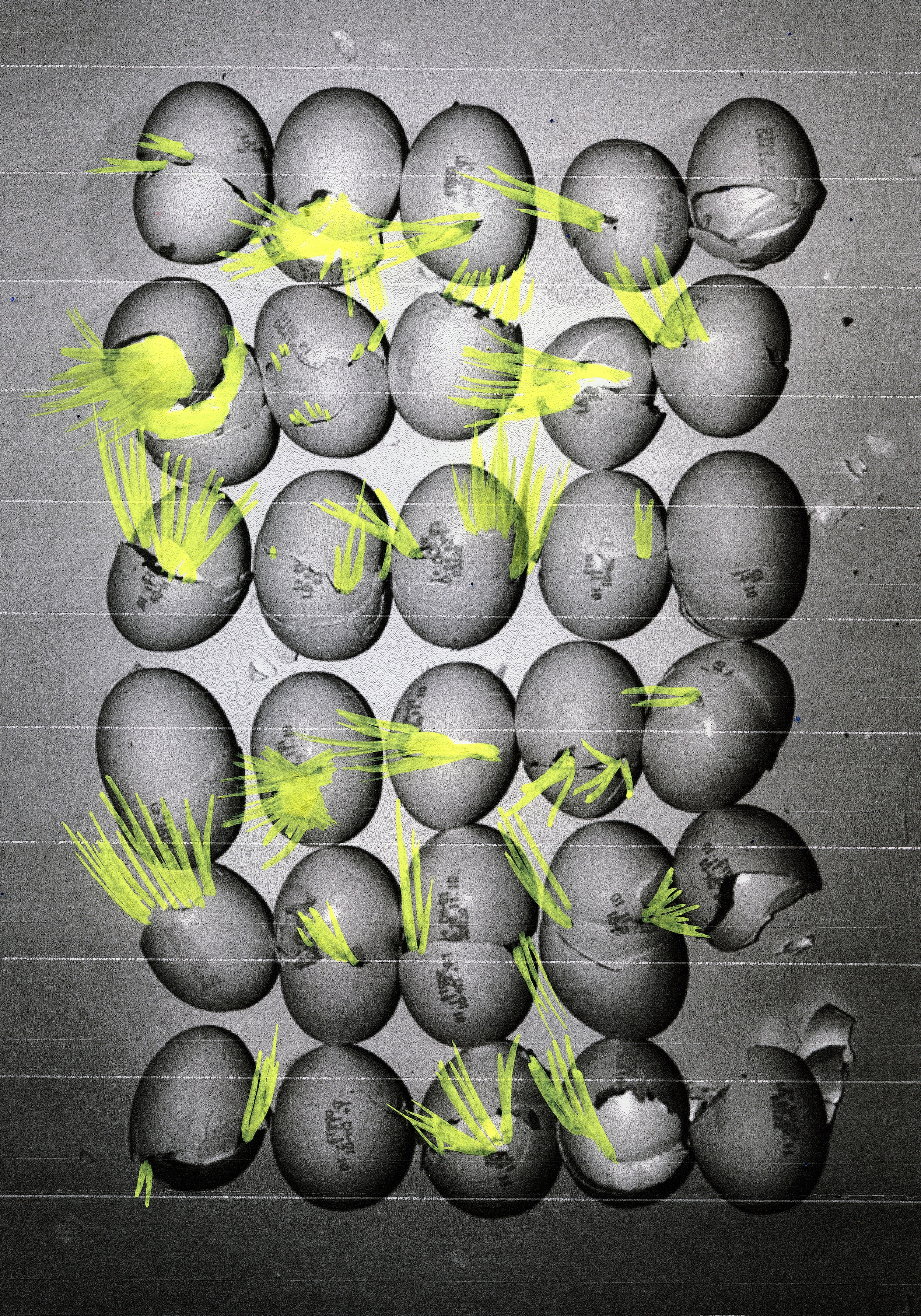© Maya Rochat
Photography’s rules are made to be broken. Having become frustrated with the medium’s conventions, five artists discuss how sculpture, activism and X-rays keep photography alive in their work. First up: Maya Rochat
Swiss artist Maya Rochat combines photographic and painterly techniques in her vivid, alchemical works of colour. She also creates performances and community events around her installations, inviting musicians to animate the exhibition spaces. Her solo exhibition Poetry of the Earth is at Maison Européenne de la Photographie, Paris, until 1 October 2023.
I’m from a traditional photography background in that I studied it at the École cantonale d’art de Lausanne. At some point I realised that photography felt too framed and repetitive, so I decided to explore different possibilities. I discovered what it means for images to be experienced in spaces, rather than just in a book or smaller format. From there the image became an amazing playground to enter: the question in my practice wasn’t ‘photography or painting’, but ‘what is an interesting environment?’ What is it that makes you want to look at images? There is this sensuality and playfulness to both media which I like to connect – to create something which you’re never really sure what you’re looking at.
My focus moved from portraits to nature photography, and then to photographs of its matter. From that the move towards painting felt logical. I also like combining techniques: a photographic technique to print out painting, or similar. It becomes an intertwined language.
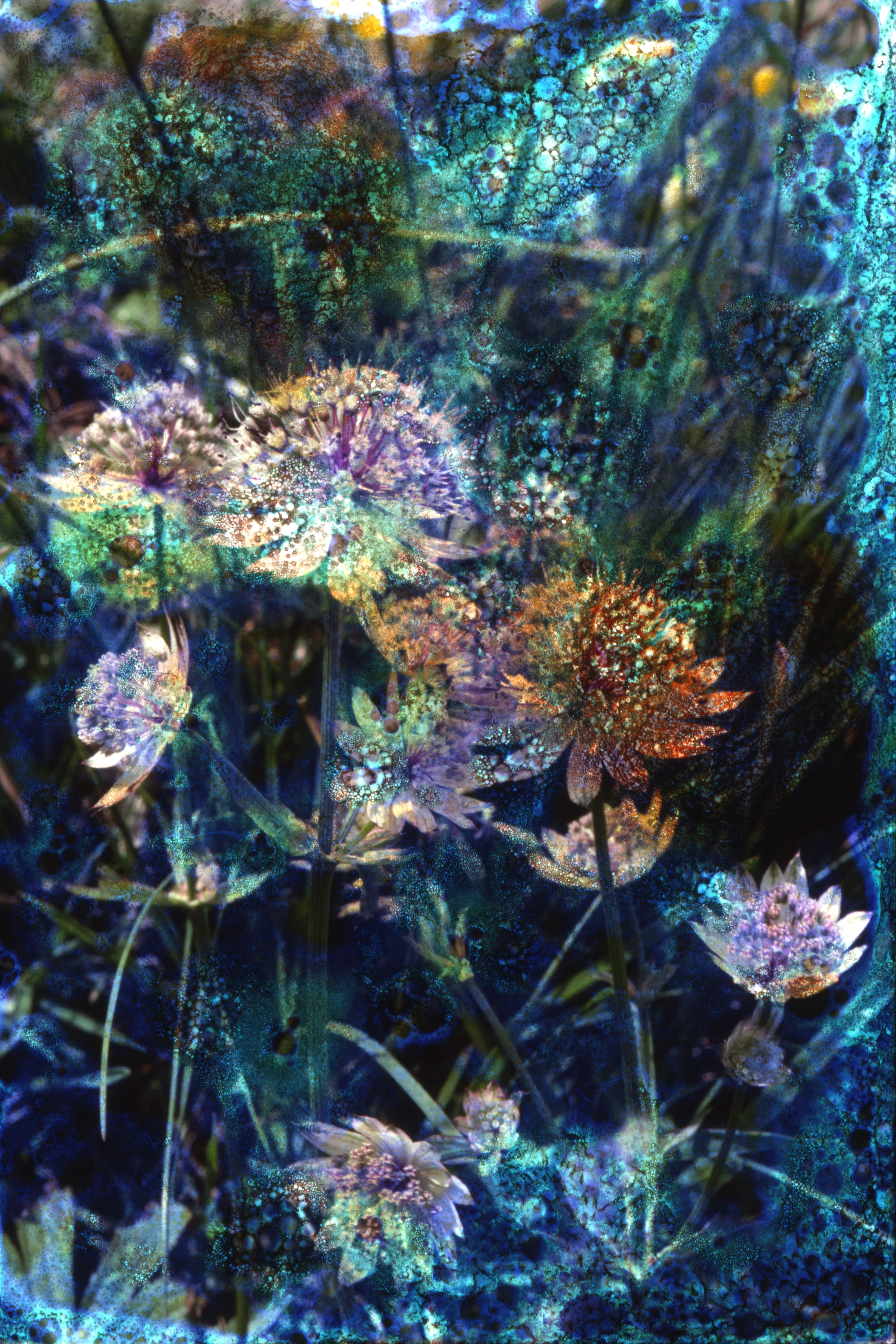
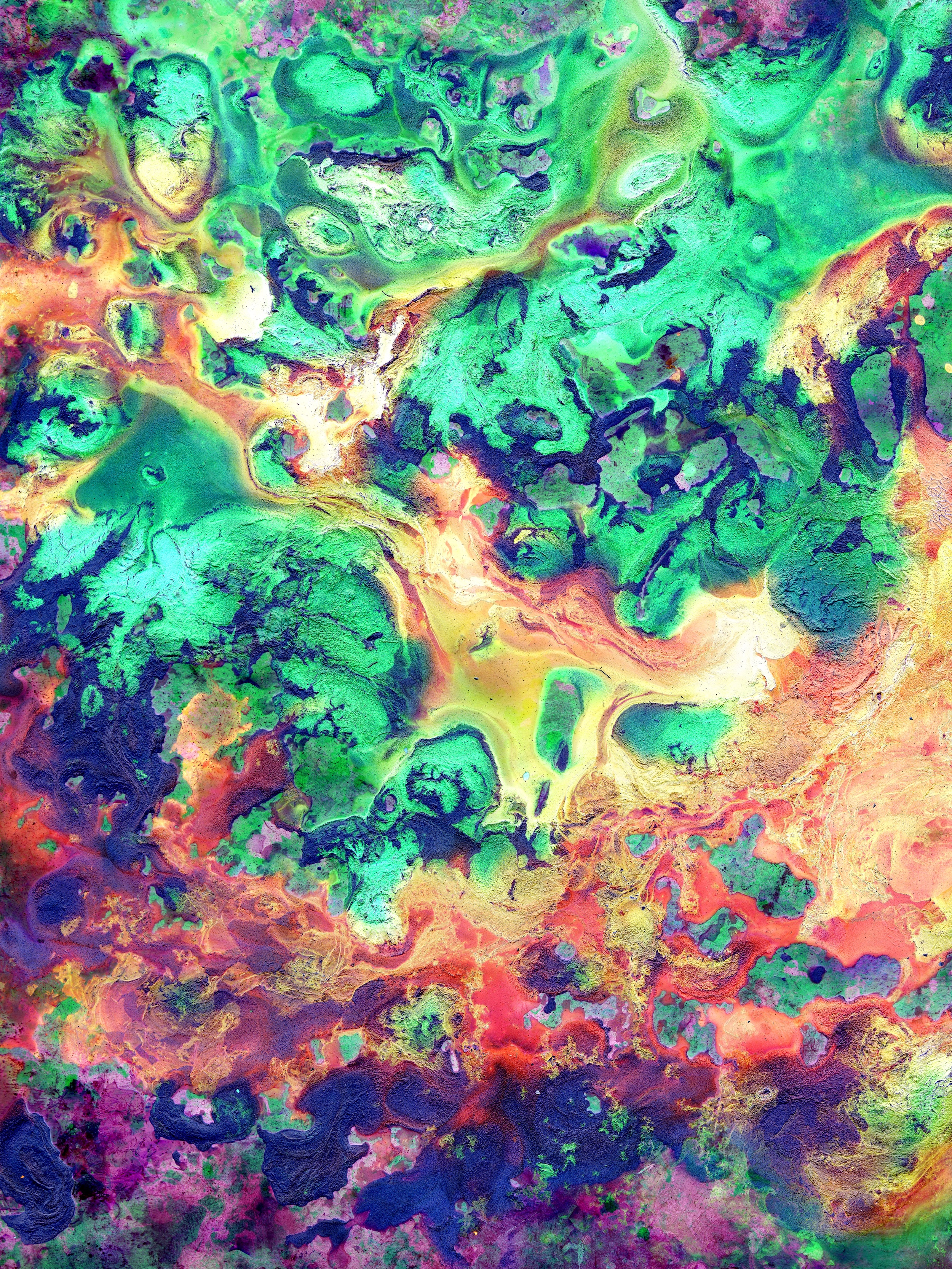
The space is always at the centre of my installations. That’s what inspires me to play with certain materials. The contemporary spaces I choose can take other materials in a way that traditional ones cannot. I build my work in the spaces; I want visitors to feel that the work is made for them – in a particular place and for a specific experience.
In Switzerland, we have this practice in school where you make your own marble painting and you make a little booklet out of it to take home. I like that familiar element – connecting the viewer to childhood. A Rock is a River was about human perception. I created water and mineral photographs, then came a pictorial gesture to combine the photographs (reality) with paintings (dreams) that looked like the drawings I could find in nature.
My work is more inspired by painters than photographers – and also mixed-media artists like Pipilotti Rist. There’s also Jonathan Meese, who isn’t abstract at all, but what I like is his expression of something personal – just doing the work, taking the space in a playful way. Meese’s work is cynical but is also funny, and it has a multi-dimensional aspect. You can always go deeper. There’s always more to discover.
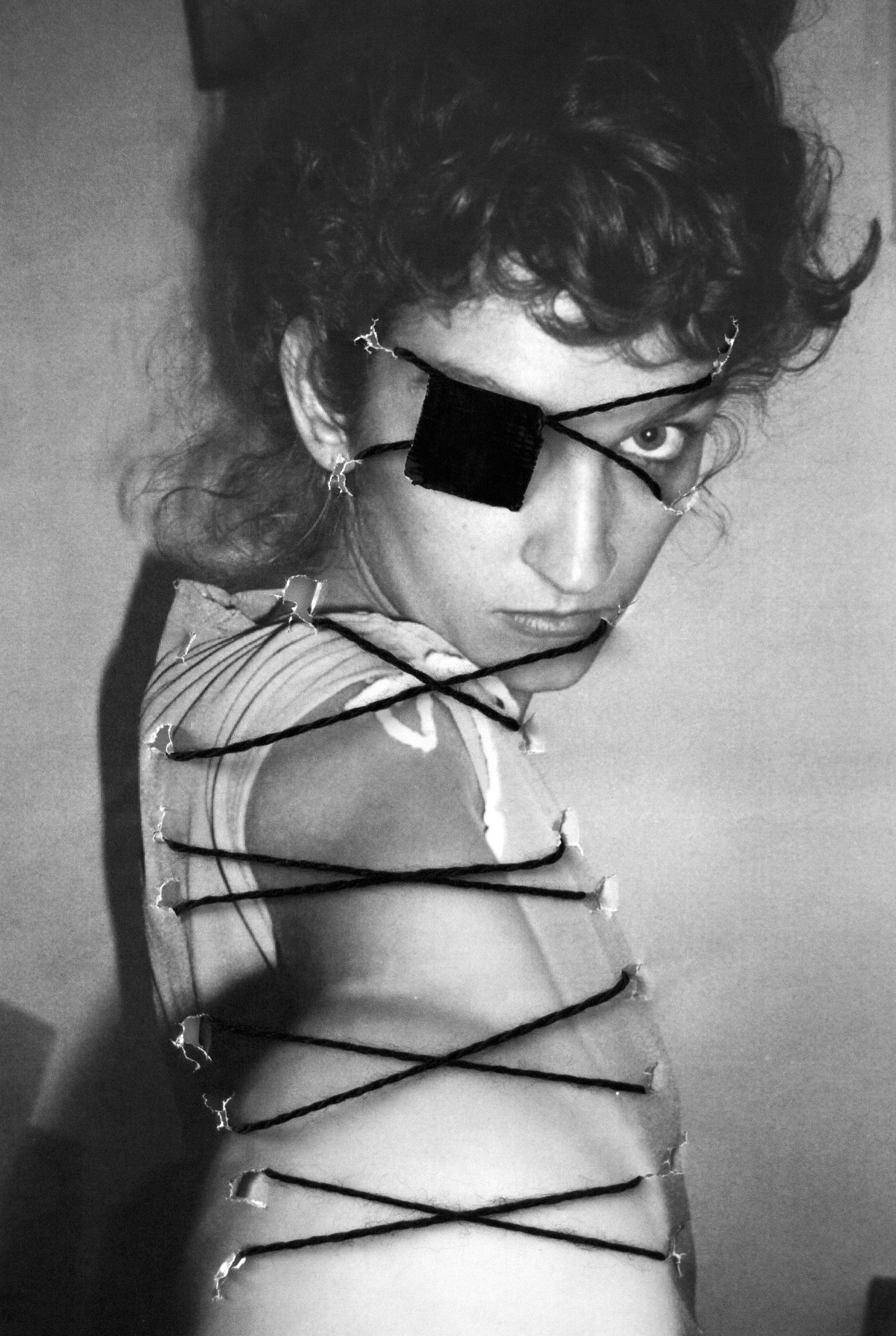
I met Simon Baker, the MEP director, around 12 years ago at Offprint, when he was working at Tate. The book is at the centre of my work, so for Poetry of the Earth, we thought it would be nice to honour the printed form, which isn’t always highly valued in the art world but is dear to photographers. For me it’s the most beautiful object you can have in terms of images. I love shows, but they’re ephemeral and don’t have this intimacy with the viewer. Each space in the MEP is one ‘book’, and then other prints and installations correspond to the production period, so you can also follow my work’s evolution. Ten years ago my practice was a lot more punk and violent. Now it’s more contemplative and has a different energy. My work is becoming more beautiful but without being too nice.
There is an invitation to admire natural motives in my exhibitions which I want people to start seeing in the world around them. This is what I would like people to take from the show. So when you sit in your car and water drops on the windscreen, you can enjoy this small but beautiful moment. We could all use a little bit more beauty in our lives. I don’t want to have violence in my work anymore; there is enough violence in the world. I want to give something positive. We need to find breathing space for inspiration – to project something positive for our future.
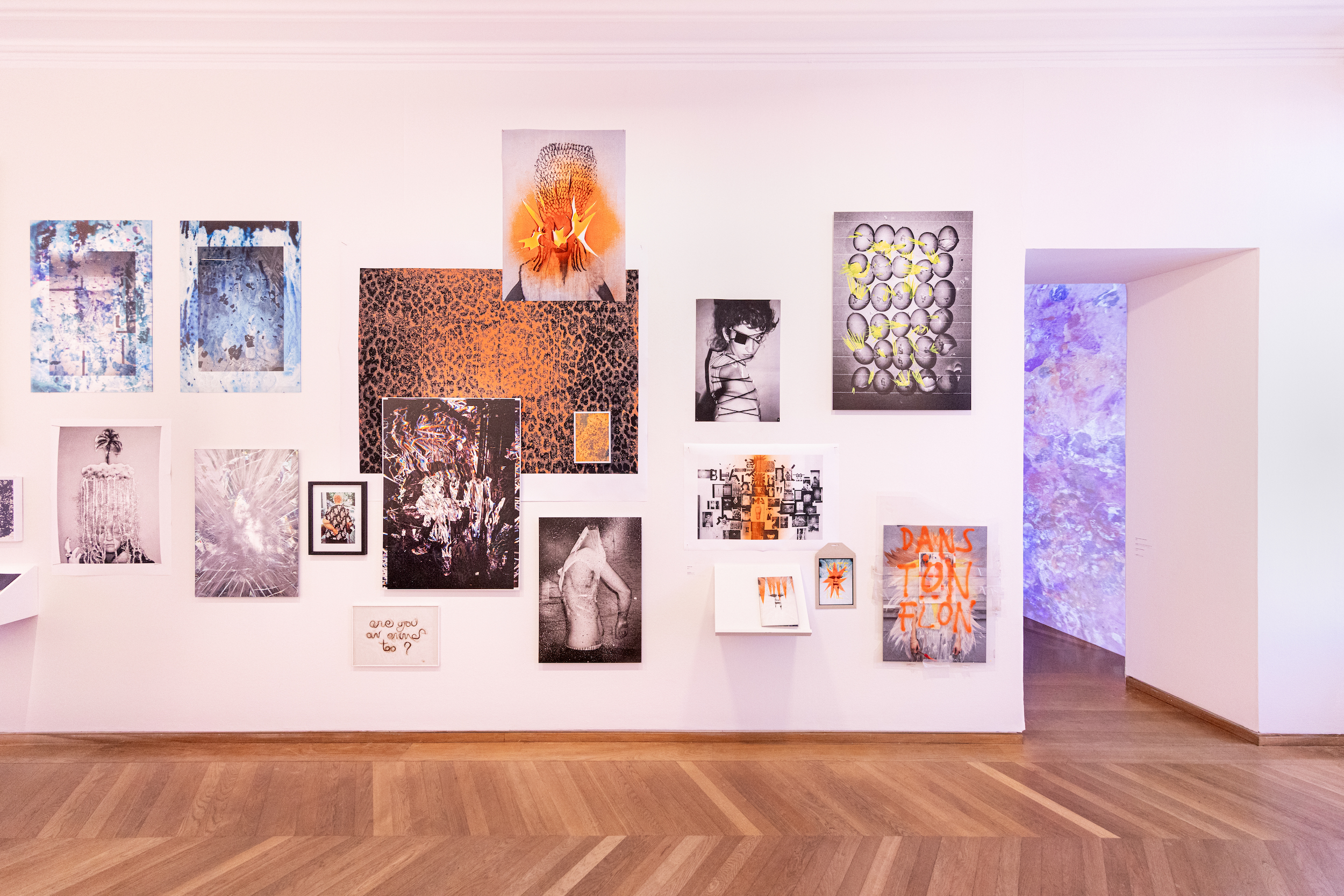
“I build my work in the spaces; I want visitors to feel that the work is made for them – in a particular place and for a specific experience”
In 2019, analogue nature photography came back into my work. I found a couple who have 20 years’ worth of slides which are really well annotated. Usually I don’t work with found material, but on this occasion I wanted to make them alive again. It’s difficult to look at what’s happening with nature at the moment. How can we make images that make you want to look at nature and it be a pleasant experience, not something where you think ‘We’re all going to die’?
Performances are an important aspect of my paintings. In my series Living in a Painting, I was thinking about how to share the creative image-making process with the public. I didn’t want to do this digitally, so I found overhead projectors from a school. I started to paint on transparency film, inviting musicians Julie Semoroz, Pyrit and Buvette to perform too. I’m currently making a lot of video collages which are connected to my books and the shows. They create an atmosphere and offer a relaxing moment for the people in the space.
In terms of technique, I like to look into the past and future – not to be lost in something romantic, but to explore what’s possible. There are some amazing digital tools; why not use them if it’s empowering the images? I used to photograph a lot more than I do now. It’s a bit less of everyday life, and I don’t photograph people anymore. I’m stretching photography’s motives in a different way. I like invitations to look twice at what we believe we know already.
Maya Rochat, Poetry of the Earth, is at Maison Européenne de la Photographie, Paris, until 01 October

